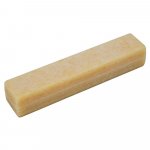Hey foggers,
I am looking for some assistance with an ongoing issue when sanding outdoor rails, decks, etc. Using my RO 125 or 90 sander with my CT36 vat. Before sanding, I thoroughly scrape the paint in all directions to remove any loose or peeing paint. I use 60 grit Granat sandpaper. I originally set the suction on vac at max and speed on sander to 6. The sanding paper gummed up with paint rather quickly. I reduced the suction to half and the speed to 4. Still encounter the issue. I have experienced it on several jobs. Having issues uploading the picture. Any ideas what the problem is or how to resolve it? Also, can the sandpaper be cleaned? I go through a lot of sandpaper quickly. Thanks.
Jim
I am looking for some assistance with an ongoing issue when sanding outdoor rails, decks, etc. Using my RO 125 or 90 sander with my CT36 vat. Before sanding, I thoroughly scrape the paint in all directions to remove any loose or peeing paint. I use 60 grit Granat sandpaper. I originally set the suction on vac at max and speed on sander to 6. The sanding paper gummed up with paint rather quickly. I reduced the suction to half and the speed to 4. Still encounter the issue. I have experienced it on several jobs. Having issues uploading the picture. Any ideas what the problem is or how to resolve it? Also, can the sandpaper be cleaned? I go through a lot of sandpaper quickly. Thanks.
Jim

